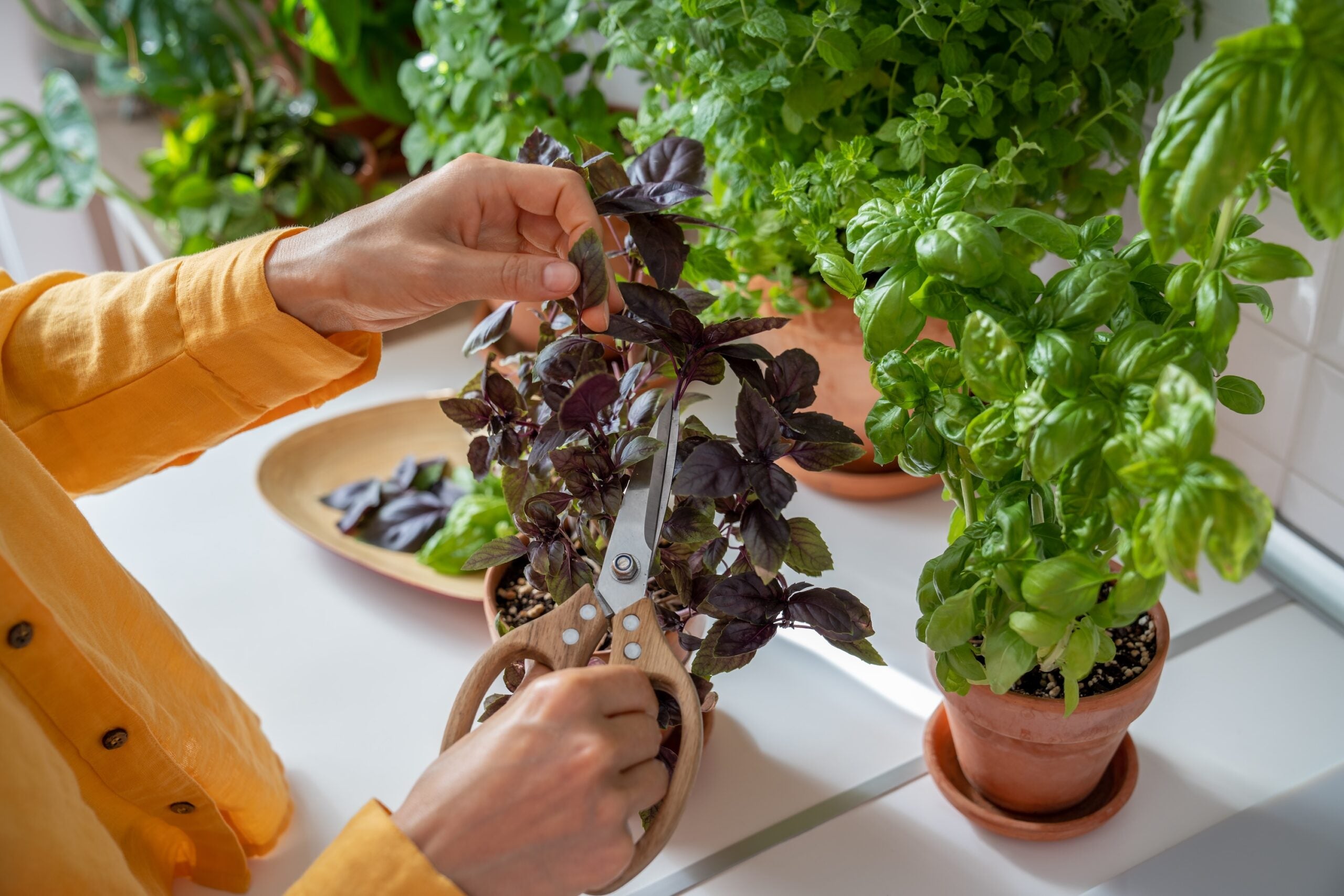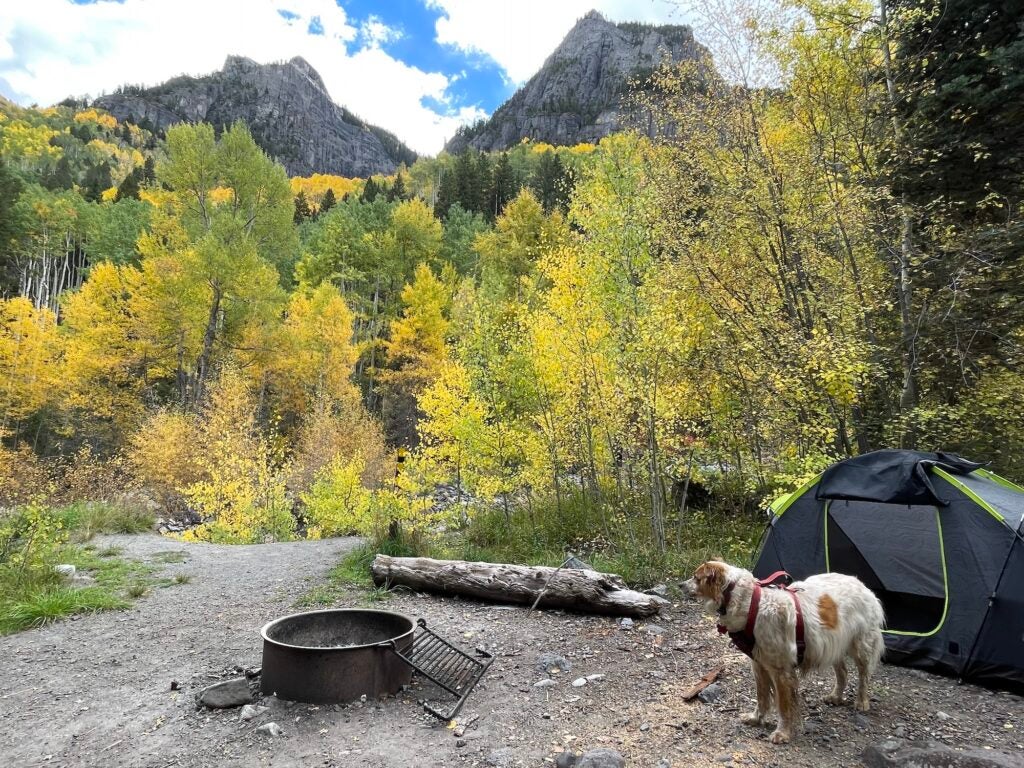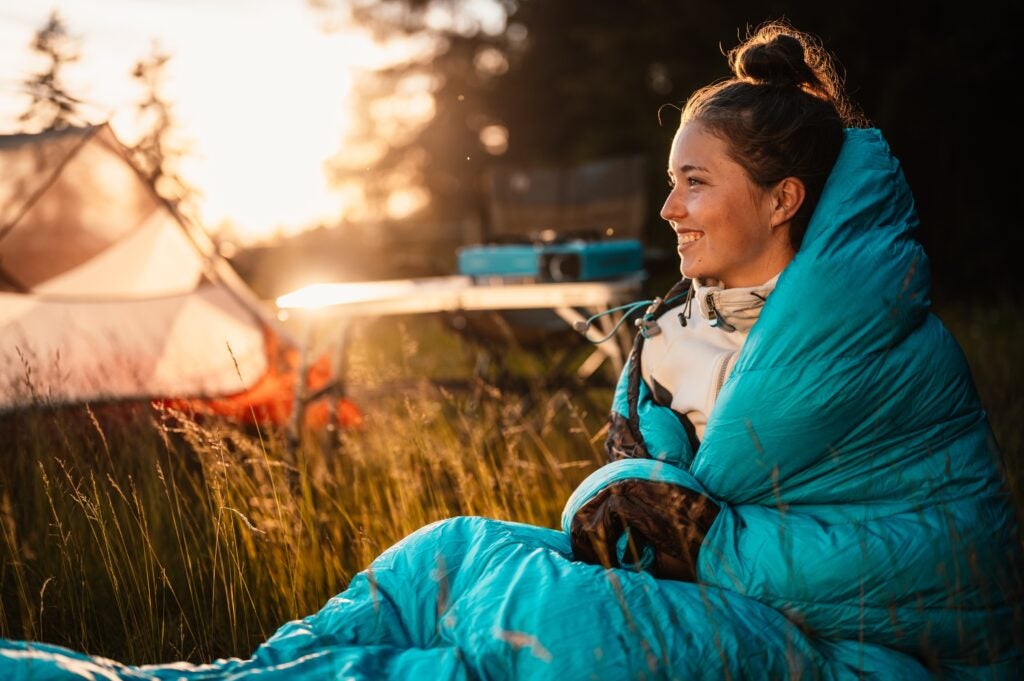Certain aspects of living on the road can get redundant, especially when it comes to meals. If you’re looking for a unique way to spice things up, consider planting an herb garden. It may seem daunting to try and keep a garden alive while on the road, but by picking the correct container and appropriate herbs, you’ll easily be able to grow and maintain a small garden while hitting the road. It can spice up your meals and add a wonderful aroma and a splash of color to your travels.
Choosing a container
Your choice of container depends on how you’re traveling. For instance, if you’re in a spacious RV and plugged in every night, you’ll have more options than in a smaller, off-grid van moving nightly.
If you have a larger space and plan to stay put for a few days, consider a medium-sized (roughly 10-gallon) self-watering mobile planter with wheels. These contained, easy-to-move units are excellent for those boondocking or in a campground for a few days at a time. They’re easy to roll outside into the sun, and the optional self-watering reservoir is incredibly convenient if, like me, you’re prone to forgetting when you last watered. These larger pots are stable during travel and easy to secure.
If you have counter space and reliable electricity (ideally plugged in at a campground), a countertop hydroponic garden is a great choice. The grow light and water pump operate automatically for about 15 hours a day. You’ll need to add water and plant food occasionally, but many models will alert you when it’s time.
For those with limited space or who move frequently, small plastic containers for each herb are ideal. These durable pots can be rearranged easily and placed in prime spots once parked. Many also include built-in, removable water traps to prevent spills, and self-watering options are available.
Types of herbs that do well
In my experience, many herbs do great with warm temps and lots of sunlight but can accommodate a variety of conditions. If you’re going to plant a mix of herbs, research which will grow best in the same pots together—consider both sunlight and soil-dampness requirements.
Full sun: Basil and mint love the sun. However, in hotter climates like the South, they will likely enjoy partial shade in the afternoons. Be warned: mint can grow aggressively and quickly take over a garden. Consider planting mint in its own pot.
Full sun but tolerate some shade: Rosemary, cilantro, parsley, thyme, and chives do great in sunny conditions but can accommodate some partial shade. Cilantro and parsley grow well in pots since they tend to grow upwards instead of out, meaning they can be planted closer together. Thyme is a hearty plant and grows as ground cover, that is to say, quickly and with vigor.
Shade plants: Chevril, lemon balm, and French tarragon are all quite happy in the shade. Their unique scents and flavors offer a unique twist to any herb garden.
These are just a few options. With so many choices, you can find the perfect herbs to complement your cooking style.
Other Considerations
Direct sunlight is better than light filtered through windows. If you won’t be moving your plants outside much, consider more shade-accommodating herbs. Additionally, temperatures in a closed-up vehicle can quickly skyrocket. In summer, it’s essential to have some ventilation so plants don’t overheat. In the wintertime, ensure it’s not getting too cold outside (or even inside) to keep herbs happy.
The fastest way to start your garden is to buy plants rather than grow from seed. Herbs from seed can take a long time to be productive and often fail without careful handling. When buying plants, check for bugs/eggs/mildew. Though these are generally more a nuisance than a problem, starting off on the right foot is best. Look for small black aphids on chives, signs of powdery mildew on rosemary, and small mite eggs on the underside of leaves. If you do end up with a problem, Neem Oil usually takes care of it. To buy herbs and dirt, consider visiting a local garden shop (rather than a hardware or big box store). The plants tend to be healthier, and the soil mixes have less risk of mites or mold than the everyday bulk brands found elsewhere.
If you use a planter/garden with a water reservoir, it is best to lay down a towel when moving between camps in case of spills. Also, be sure to somehow secure your planter in case you have to hit the brakes.
The Dyrt is the only camping app with all of the public and private campgrounds, RV parks, and free camping locations in the United States. Download now for iOS and Android.Popular Articles:
Articles on The Dyrt Magazine may contain links to affiliate websites. The Dyrt receives an affiliate commission for any purchases made by using such links at no additional cost to you the consumer.



